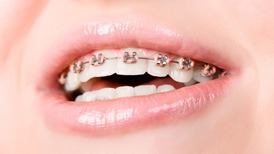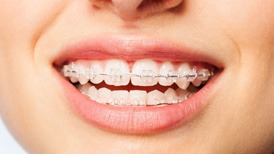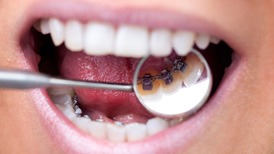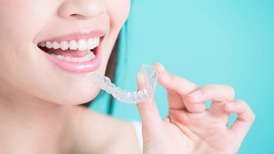When to start Braces for Children?
Early growth years are the best time to correct arch discrepancies. Functional appliances are unnoticeable, save treatment time and expense if braces are required when the adult teeth erupt.
Dr. Okubo Recommends getting a complimentary 'happy smile exam' when your child is 7 years old.
Why Early Detection is Important for Kids Braces
Early detection of orthodontic issues can provide an opportunity to place functional “growth appliances” which guide and optimize arch development. This will result in adult teeth that occlude in a stable bite relationship.
What are Phase 1 Braces?
Phase 1 orthodontic treatment begins when a permanent premolar or canine starts to erupt. This transition usually begins at eight years of age. The objective of Phase 1 braces is to direct and optimize jaw growth to accommodate the permanent teeth and to coordinate the growth of the upper and lower arches. Phase 1 treatment of a growing child greatly reduces the chance of relapse in the adult.
Timing your child's Phase 1 Braces
The timing of treatment is important to achieve optimal results. Phase I treatment is most effective in a growing child. There are two signs to look for when deciding if your child is ready to start phase I treatment. When your child starts quickly growing out of clothes (Ages 7-9 in girls and 9-10 in boys) and when baby molars are lost followed by the eruption of premolars.
Avoid unnecessary surgeries.
Growth-related problems can often be corrected without full orthodontic “braces”. Directing growth reduces the need to extract teeth and helps prevent a need for surgery to align the jaws. First phase orthodontics at this age, without using “full braces”, dramatically improves cooperation and results of Phase 2 or Teen Braces.
Types of Kids Braces
Indirect Bonding Braces
Indirect bonding is the most frequently used orthodontic option, as the results are reliable, and the process is usually relatively cost-effective.
Clarity Ceramic Braces
Clarity Advanced Ceramic Brackets are translucent ceramic, low profile brackets that and blend with your teeth. They are very subtle and discreet.
Harmony Lingual Braces
Lingual braces are truly hidden, in that they are positioned behind your teeth, straightening your smile and correcting your bite while virtually invisible!
Clear Teeth Aligners
Clear Removable Aligners system uses a series of clear aligners that fit over the teeth and gradually straighten them. No braces or wires are used.



